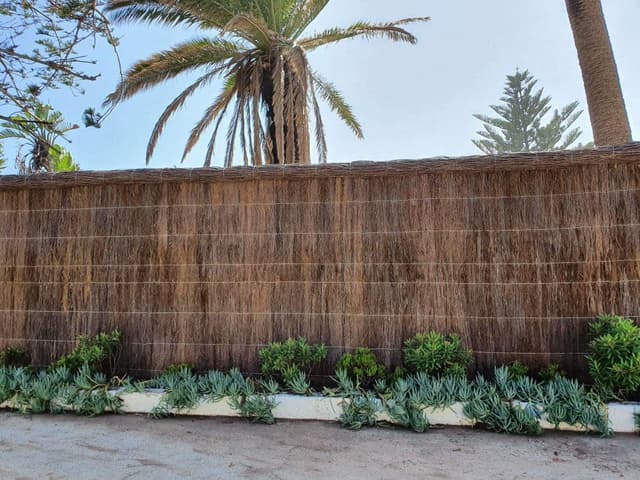Queensland’s real estate sector is undergoing a major shift in 2025, and it’s not just about location anymore. With rising energy costs and increasing environmental awareness, energy efficient homes are emerging as a top priority for both buyers and renters. In fact, according to a new report from Domain, the demand for sustainable housing has surged across the state, and the implications could be game changing for the broader property market.
From higher sale prices to growing government investment, here’s why energy efficient properties are fast becoming the new gold standard in Queensland real estate.
Rising Power Bills Drive Demand for Energy Efficient Homes
The number one factor driving interest in sustainable homes? Cost. Queensland households continue to feel the impact of rising electricity prices.
In Brisbane alone, power bills have climbed by more than 16% in just the past year, making it harder for families to manage monthly expenses. As energy costs remain high, many buyers are turning to homes with better insulation, rooftop solar systems, heat pumps, and efficient appliances as a way to cut down on long term expenses.
Moreover, recent figures from the Australian Energy Market Commission show that households could save up to 20% on energy bills over the next decade by investing in electrification and renewable solutions, something that’s clearly influencing buyer behaviour.
Energy Efficient Homes Command Premium Prices
Buyers aren’t just looking for energy savings, they’re willing to pay more for them.
Domain’s data shows that energy efficient houses in Brisbane sold for 14.1% more than their less efficient counterparts, while units saw an average premium of 10%. That translates to roughly $120,000 more for a house, purely because of its sustainable design and features.
It’s a clear sign that energy efficiency has become a real driver of property value. Homes that incorporate solar panels, double glazing, passive cooling, and water saving technology are now perceived as smarter, future-ready investments.
Government Policies Support the Shift to Energy Efficient Homes
Policy is playing a big role in shaping the shift toward greener housing. In 2025, the Queensland Government, in partnership with the Federal Government, announced a $116 million investment to improve energy performance in up to 32,000 social housing properties across the state.
This includes installations of solar systems, efficient hot water systems, ceiling insulation, and draught-proofing measures. For residents in these homes, the upgrades mean lower energy bills and greater year-round comfort; and for the property market, it’s another step toward making energy efficiency the norm, not the exception.
Meanwhile, new building codes are being introduced that require higher minimum energy performance standards for residential builds. The National Construction Code 2022 mandates at least 7 star energy ratings for new homes across Australia, further cementing sustainability as a core expectation in housing design.
Technology and Smart Homes Fueling the Market
Another factor accelerating demand for energy efficient homes is technology. With more people embracing smart home systems, homeowners are gaining real-time control over their energy use, lighting, climate, and appliances — often from a smartphone.
According to market research, Australia’s smart home sector is worth over $2.5 billion in 2025, and is forecast to double by 2027. From smart thermostats to solar battery storage and automated lighting, today’s buyers are increasingly drawn to properties that combine sustainability with modern tech.
The Climate Factor: Heatwaves and Flooding Shift Buyer Preferences
Queensland is no stranger to extreme weather, and that’s also influencing how people think about where, and how, they live.
With more frequent heatwaves, floods, and storms hitting the state, buyers are now prioritising homes that are not only energy efficient but also climate-resilient. Features like passive cooling, energy-efficient air conditioning, elevated foundations, and storm resistant roofing are no longer nice-to-haves, they’re essential.
As climate events become more common, homes that offer lower running costs and environmental protections will only become more desirable.
Consumer Awareness Is Catching Up
The good news? Australians are getting more energy savvy.
A recent national survey revealed that over 50% of Australians are actively trying to make their homes more sustainable, with the most common motivation being to reduce electricity bills. Among Queenslanders in particular, there’s growing interest in electrification and solar; but education remains a barrier.
Only 34% of survey respondents said they felt “well informed” about how to go fully electric at home. This points to a need for better information, clearer government incentives, and increased support from developers and the real estate industry.
Developers and Agents Are Responding to Market Signals
Property developers are already taking note of the shift in buyer priorities. New estates across Queensland are now being planned with energy efficiency and sustainability at their core, including electric vehicle (EV) charging stations, solar ready roofing, and homes built to 7 star energy standards.
Real estate agents are also highlighting energy features more prominently in their listings. Where once “granite benchtops” were the star attraction, now it’s solar panels, battery systems, and insulation upgrades that are drawing attention and offers.
Queensland’s Renewable Energy Zones and Long Term Impact
Looking ahead, Queensland’s broader commitment to renewable energy will further reinforce the property market’s sustainability trend. The state has identified 12 Renewable Energy Zones (REZs), designed to connect 22 gigawatts of solar, wind, and other renewables to the grid by 2035.
These zones are expected to create thousands of jobs and stimulate regional growth, especially in areas like Central and Far North Queensland. For investors, this means opportunity, energy efficient homes located within or near these REZs may see even stronger demand and appreciation in value.
What It Means for Buyers and Sellers
If you’re buying a home in Queensland, energy efficiency is no longer optional, it’s a smart financial decision that pays off in comfort, savings, and resale value. For sellers, making sustainable upgrades can dramatically increase your property’s marketability and sale price.
Whether it’s installing solar panels, replacing outdated insulation, or switching to energy efficient appliances, the ROI on sustainability has never been clearer.
The Future of Housing in Queensland
Queensland is at the forefront of a nationwide movement toward sustainable housing, and 2025 could well be the tipping point. As affordability pressures mount and climate change accelerates, energy efficiency has become more than a buzzword, it’s now a defining factor in real estate decisions.
For homeowners, investors, developers, and policy makers, the message is clear: the future of Queensland’s housing market is green, smart, and energy conscious.
For more insights on real estate trends, green housing, and economic news across Australia, stay with AustraliaBusinessNews.com.au.












